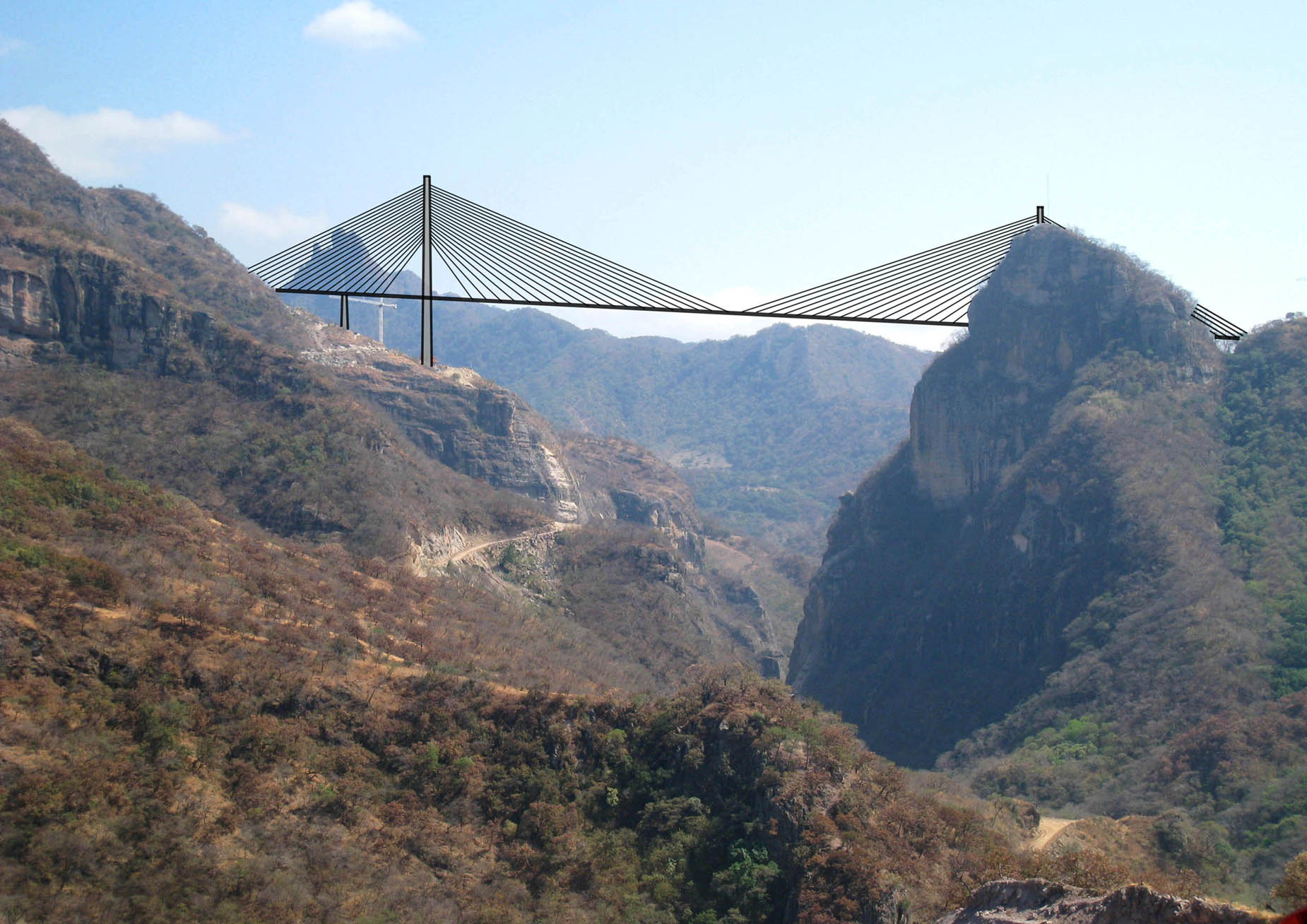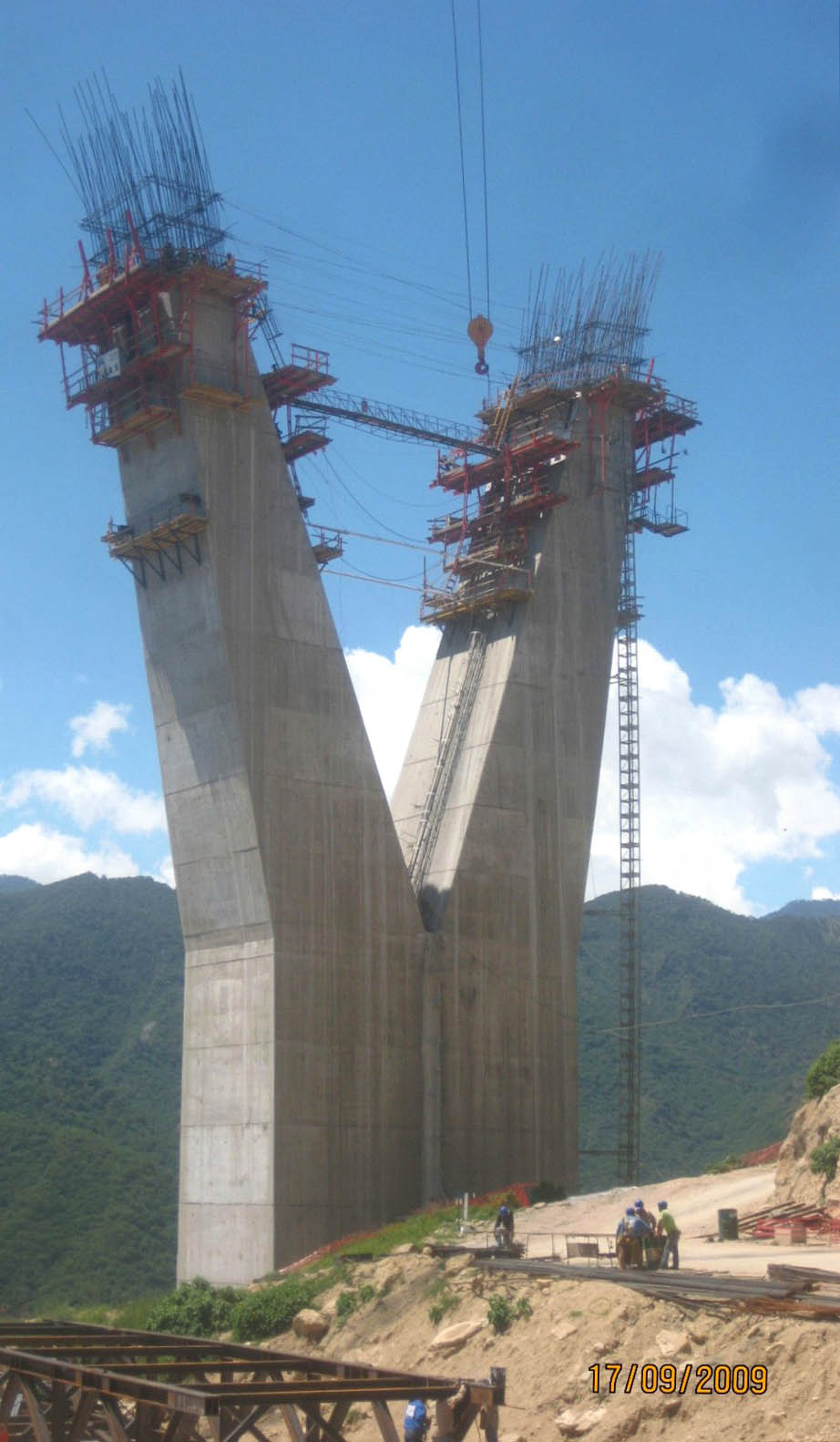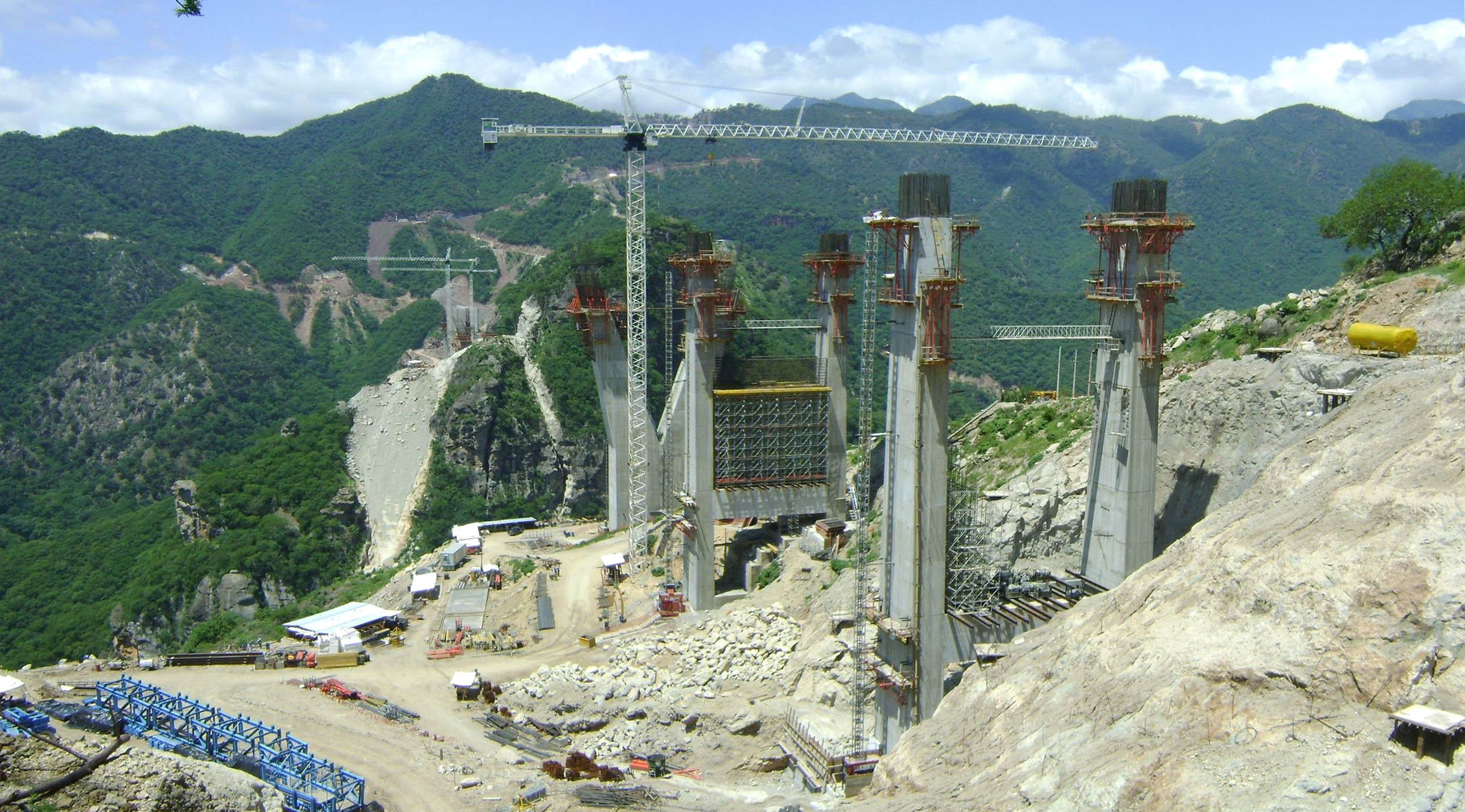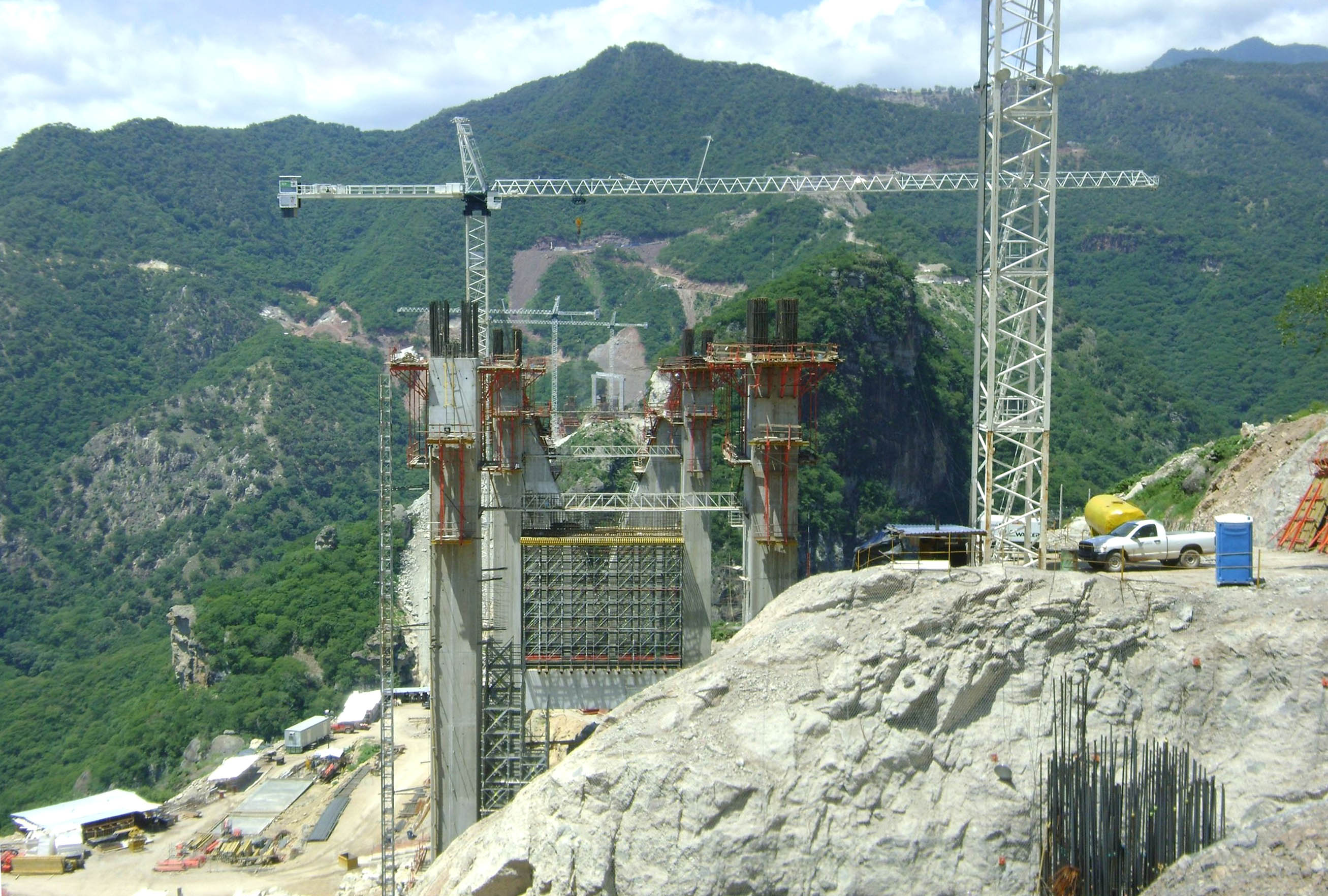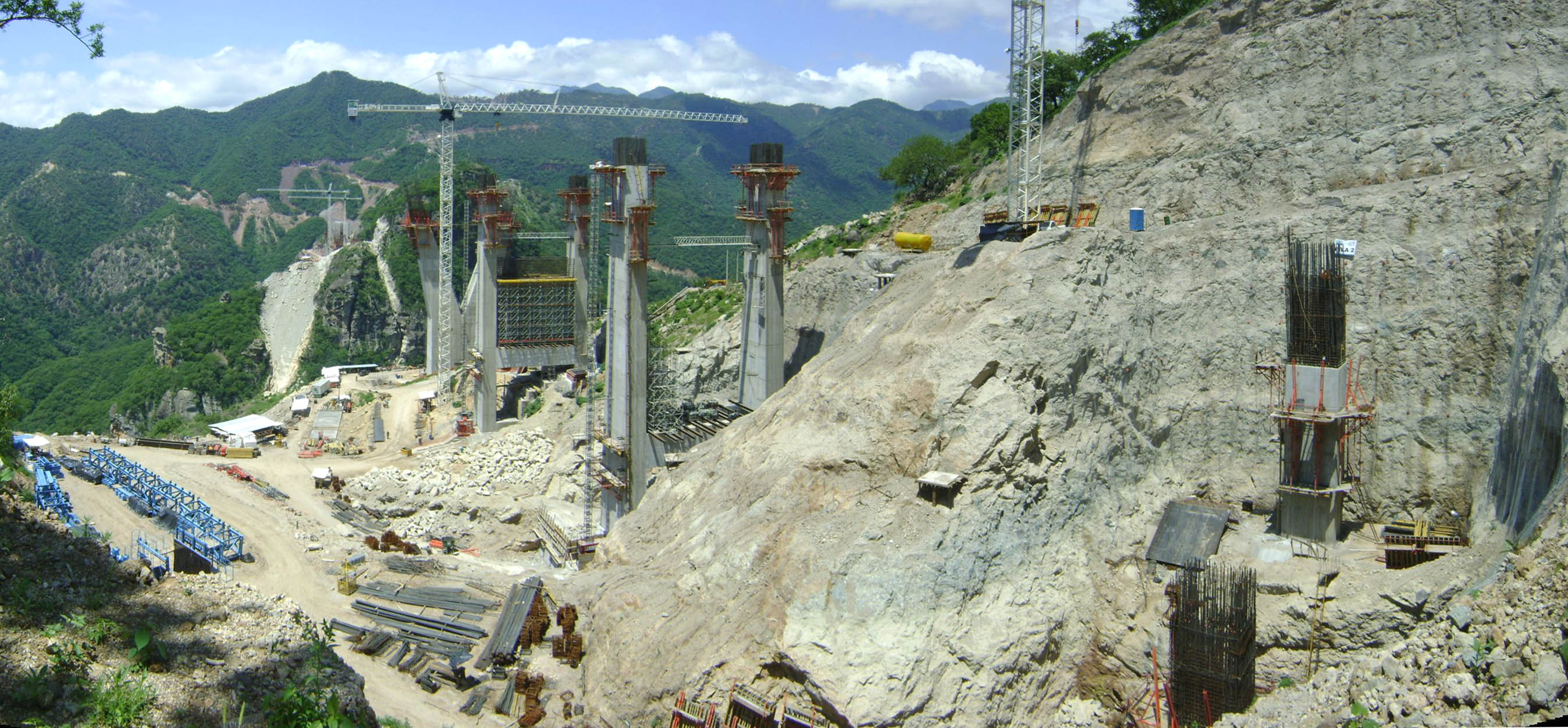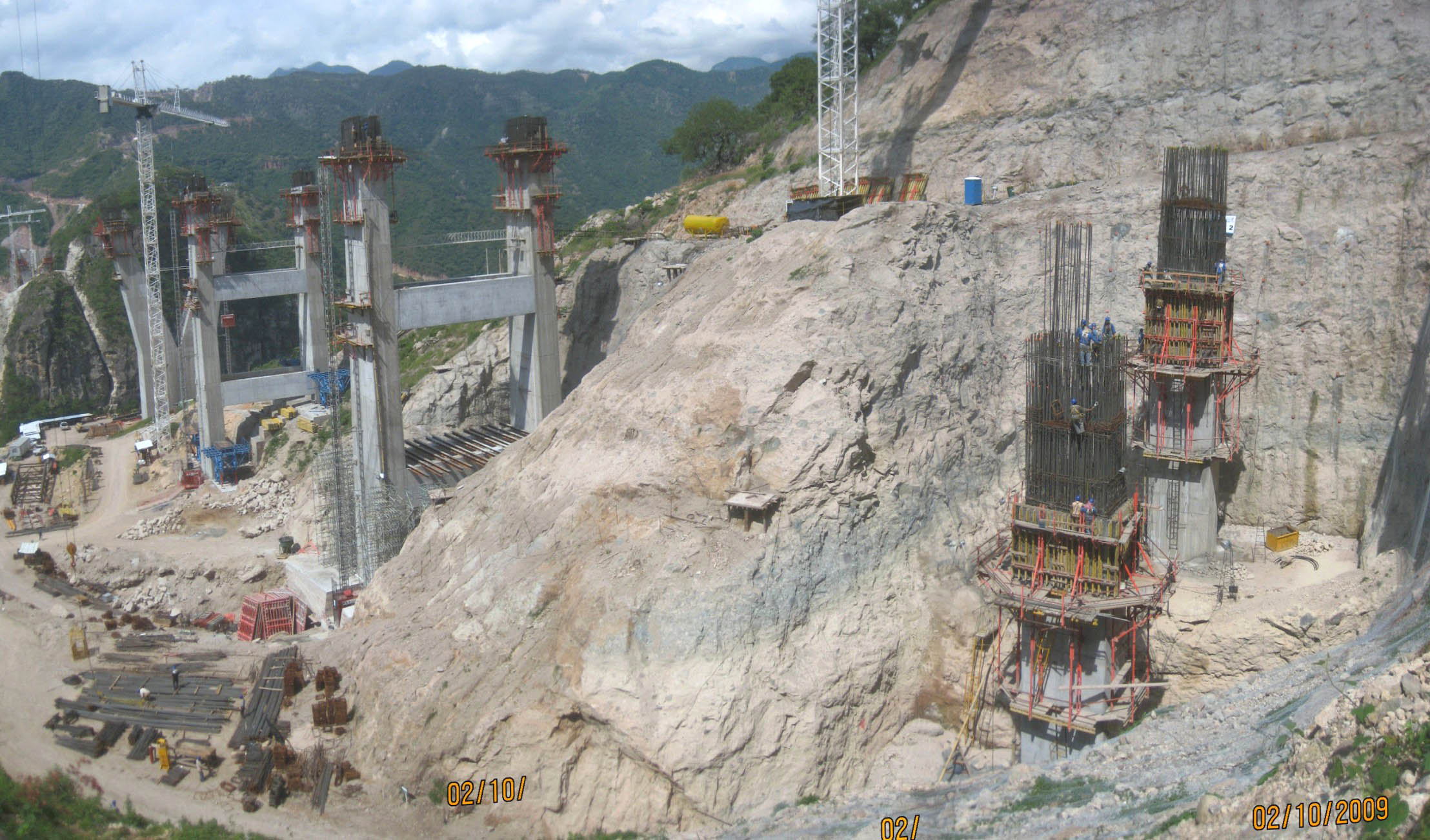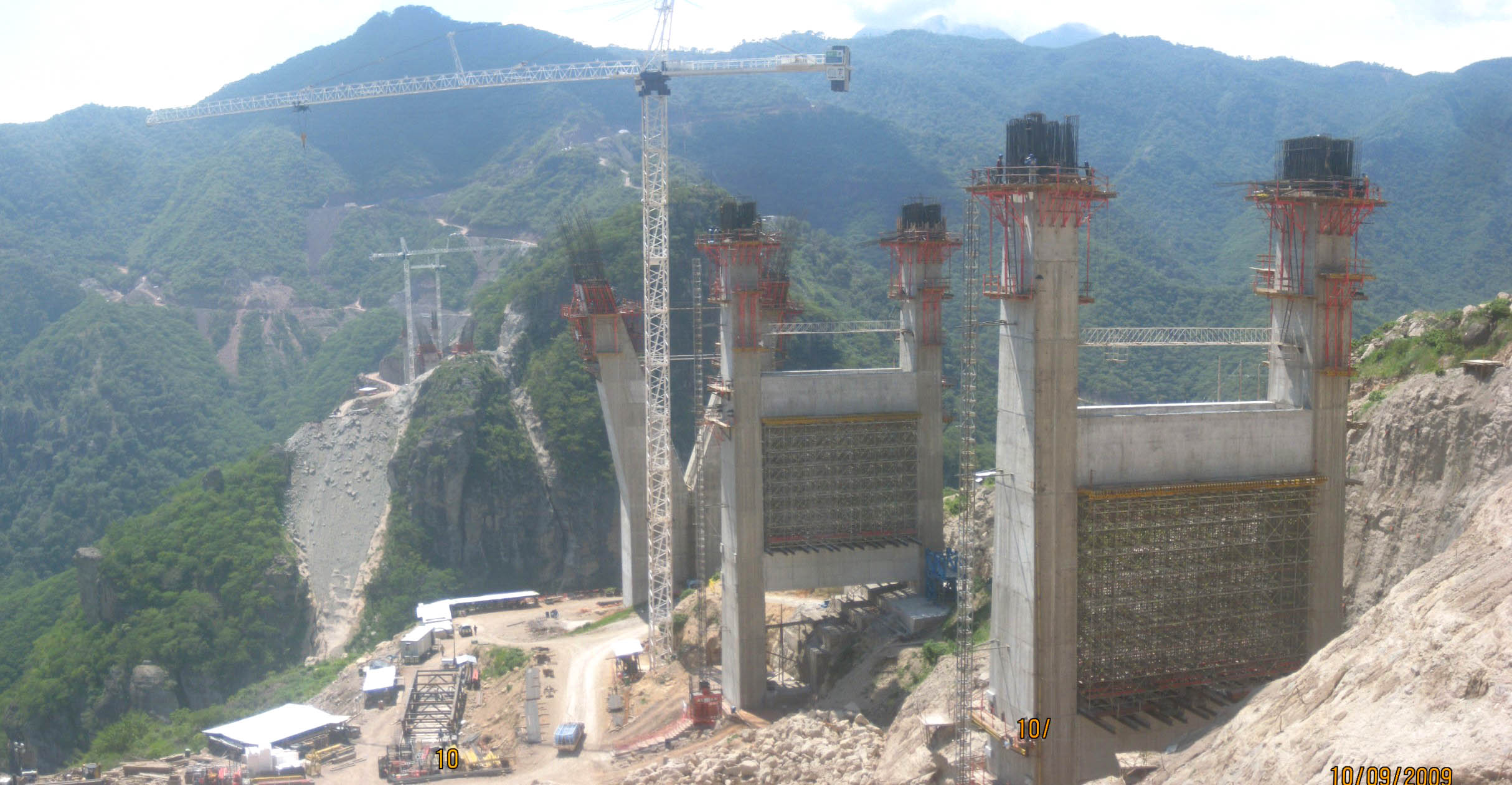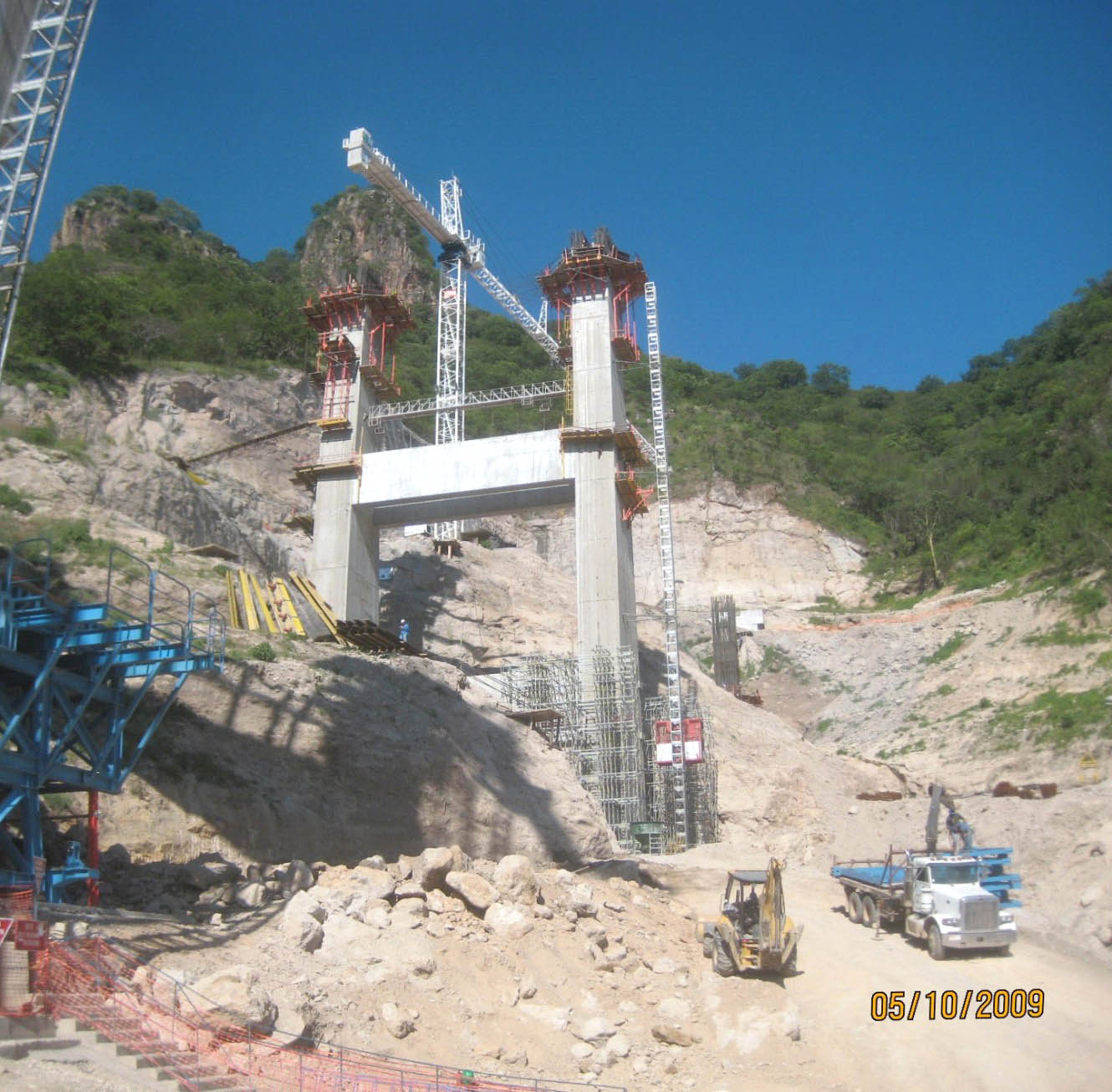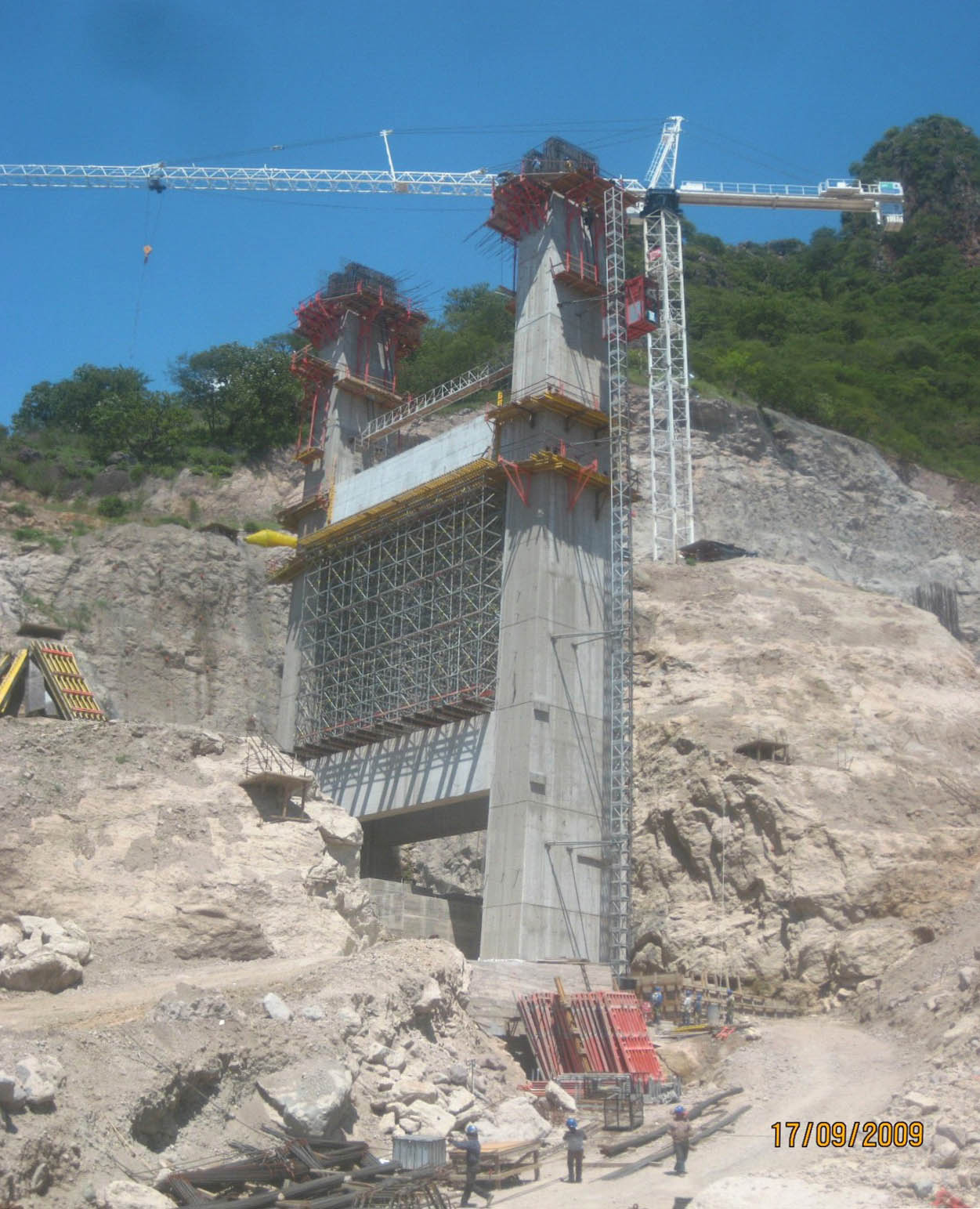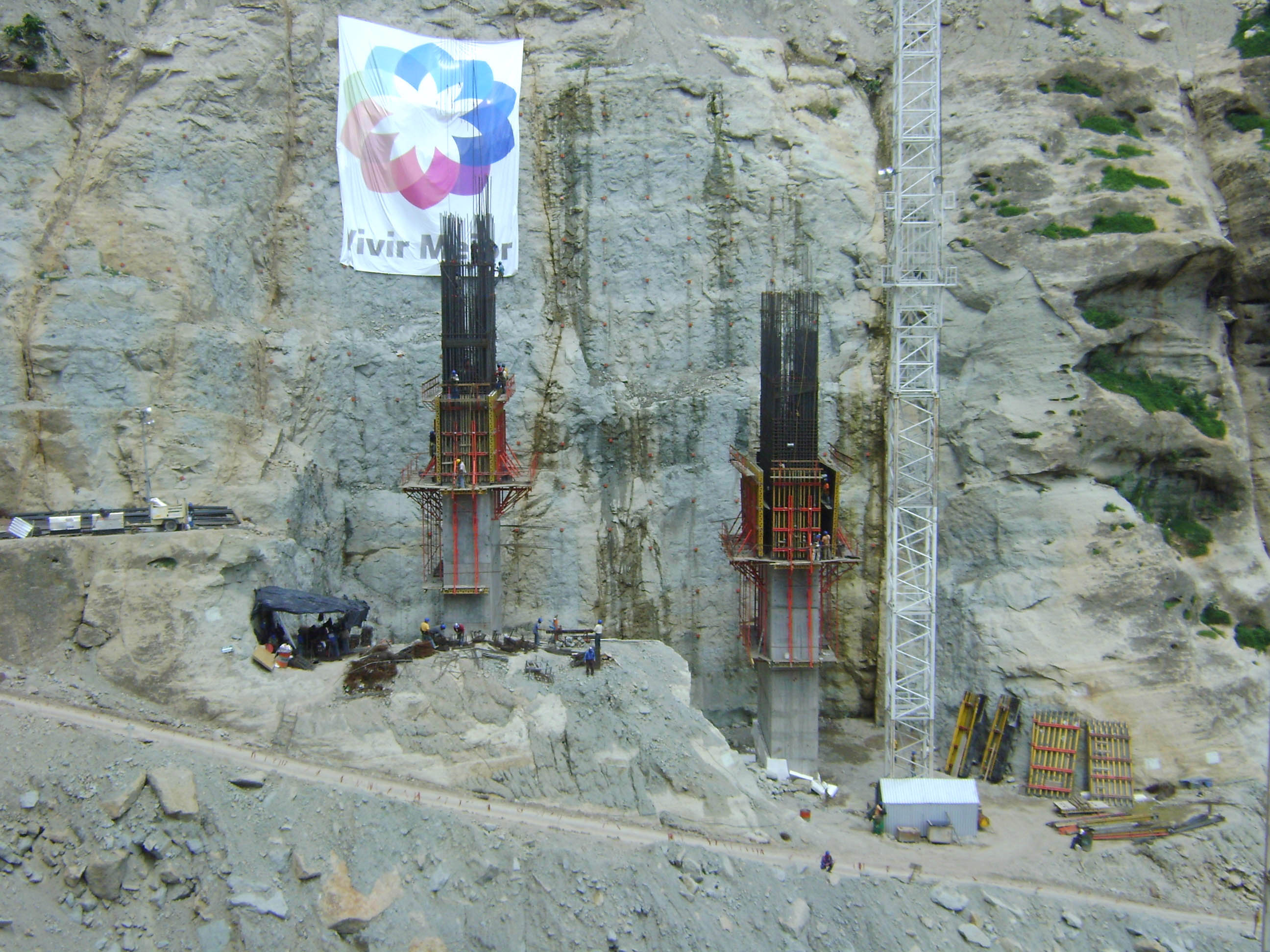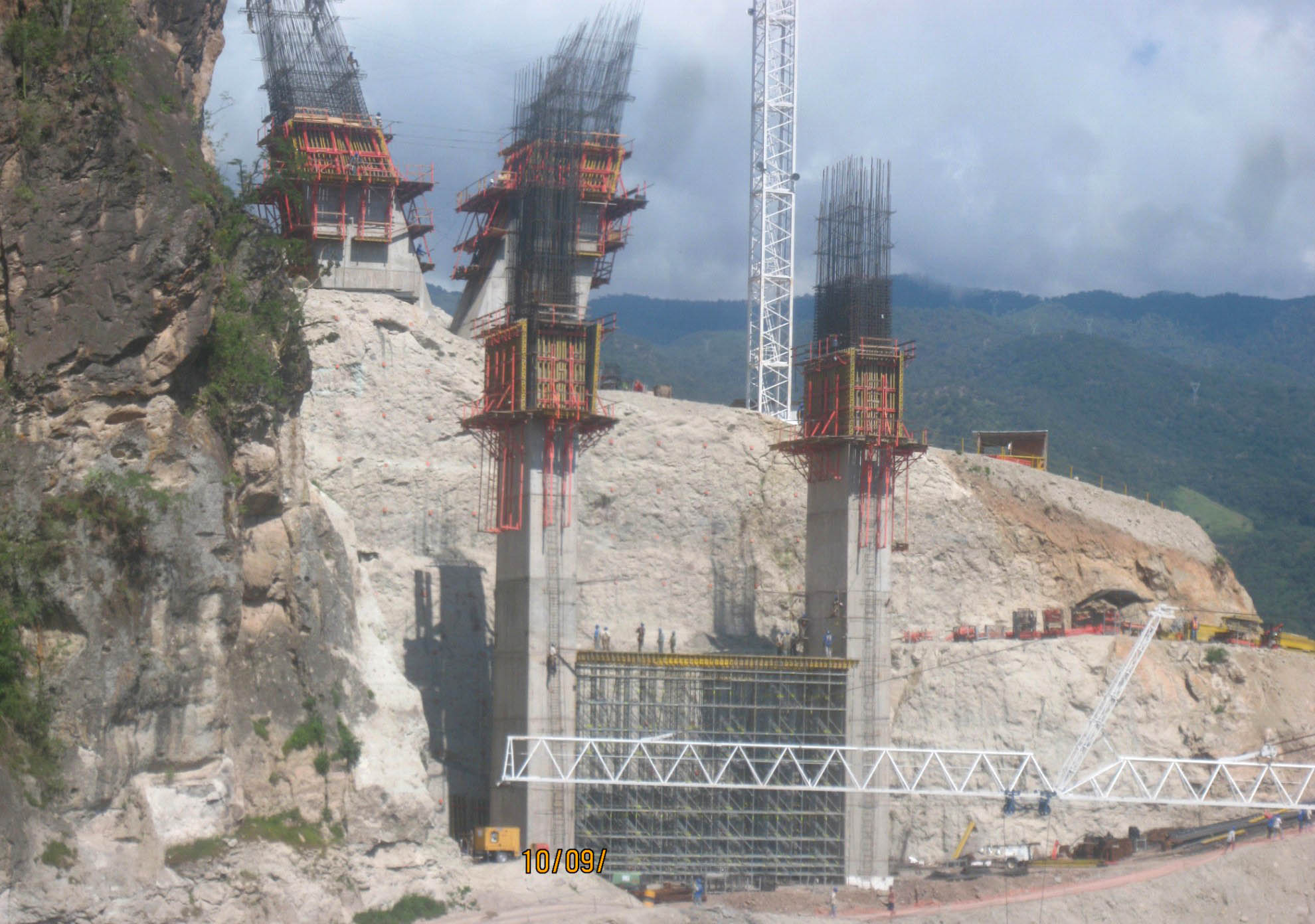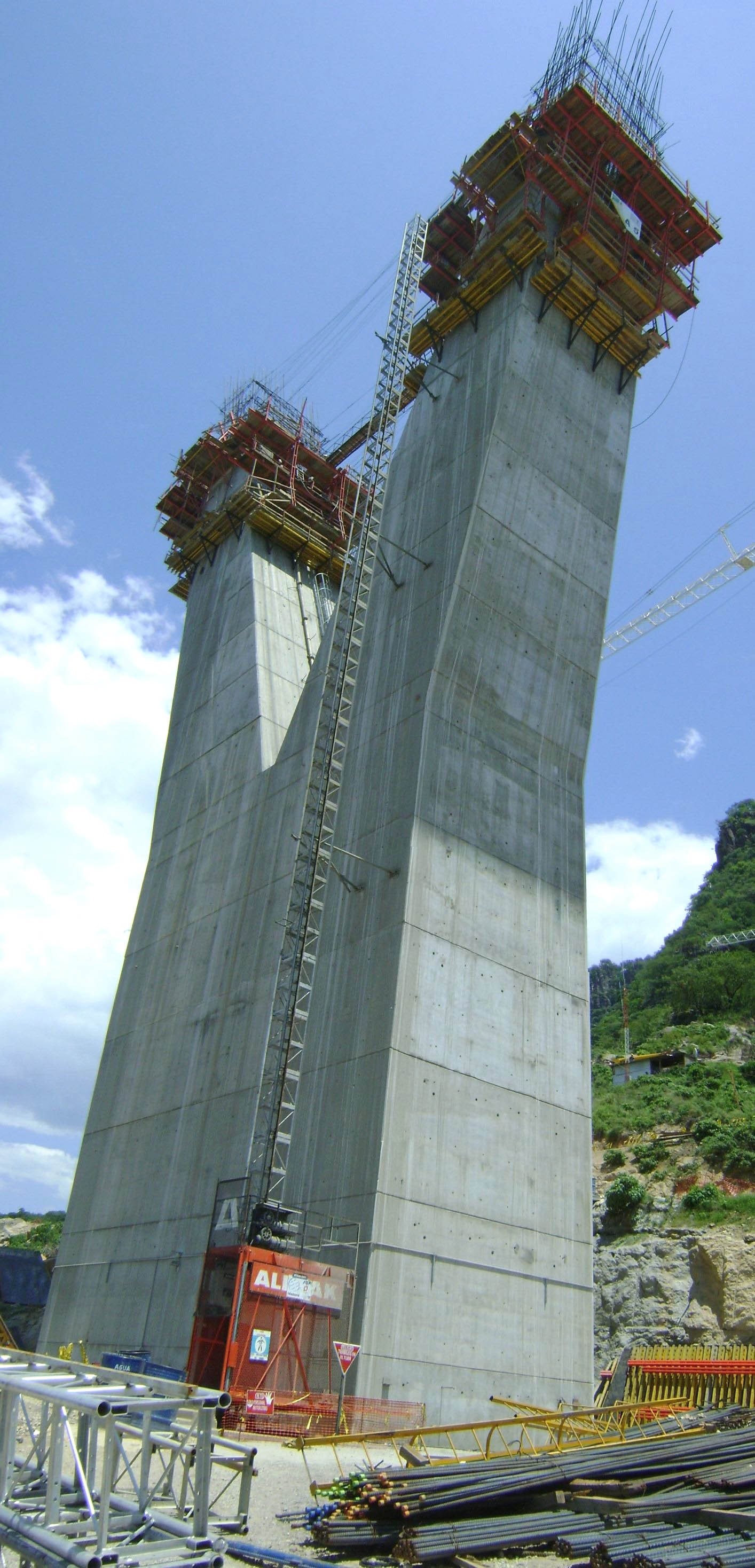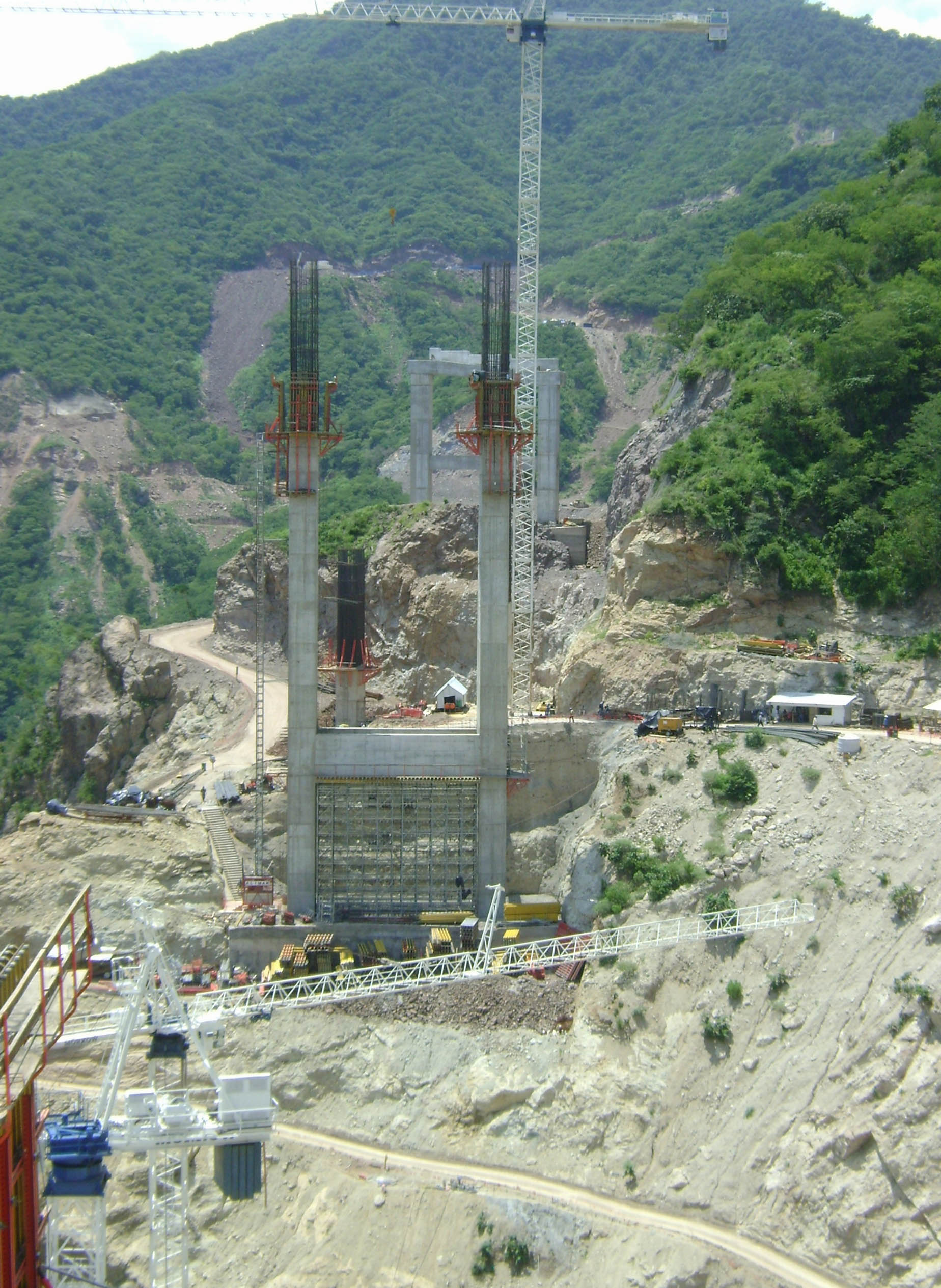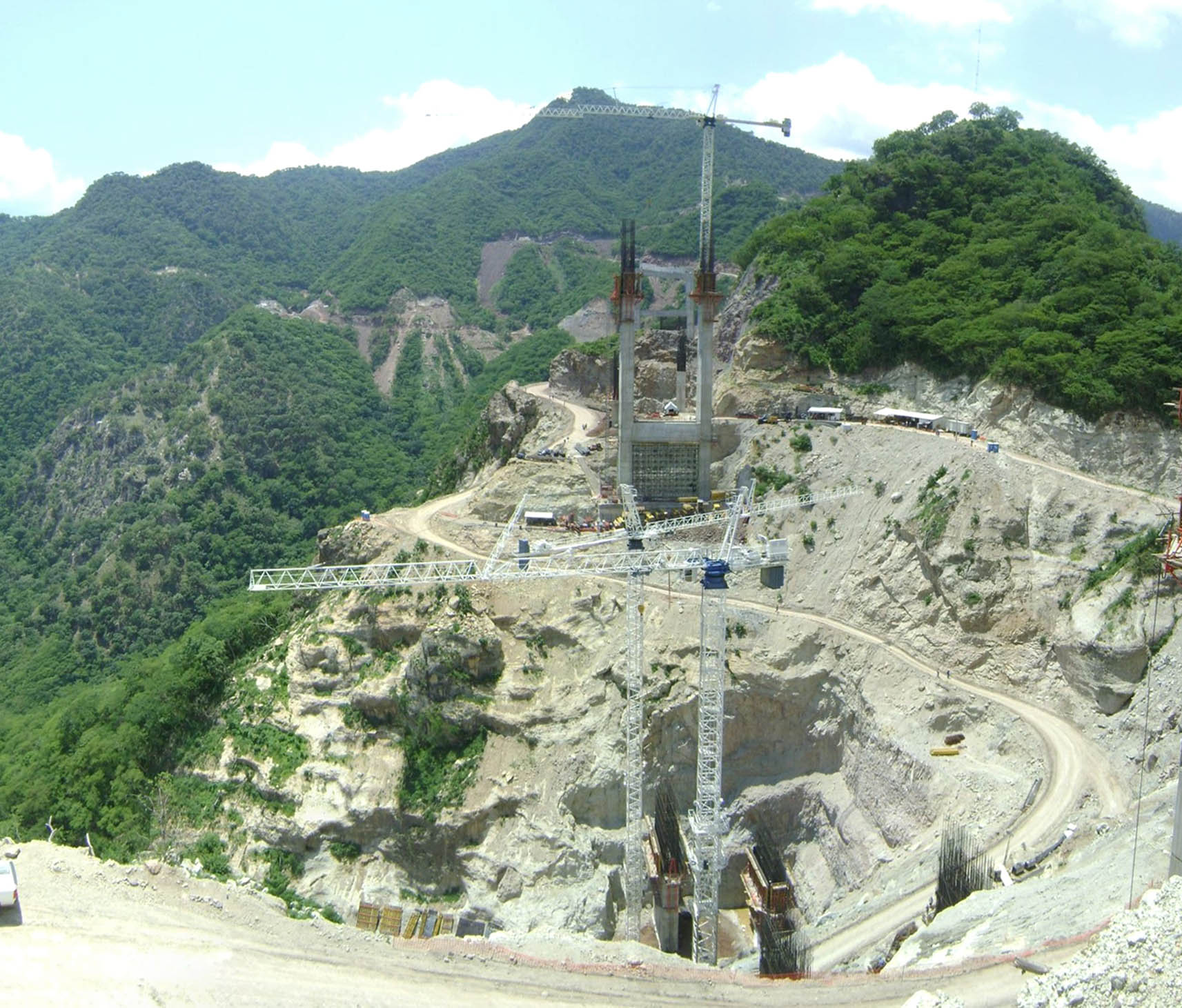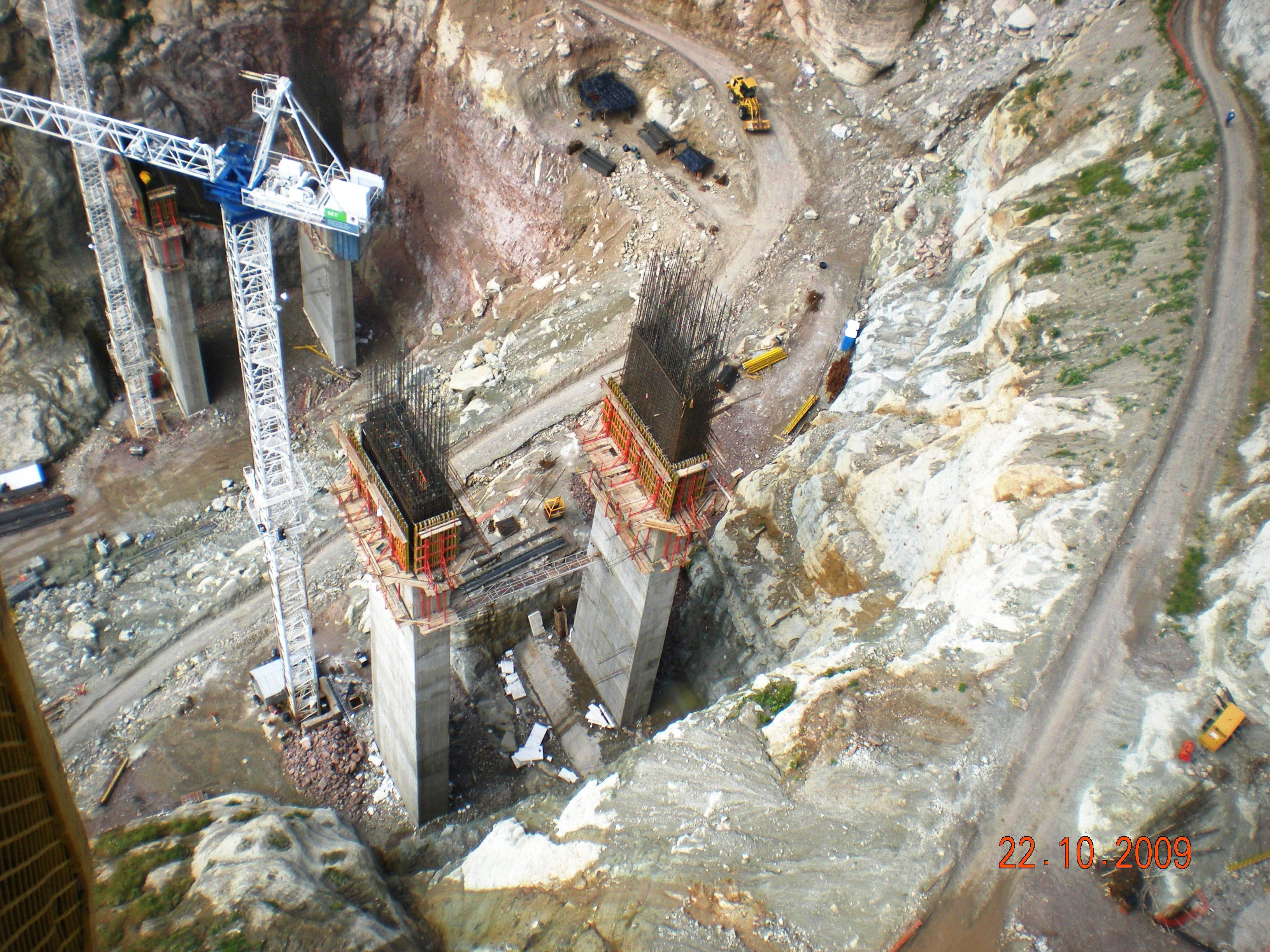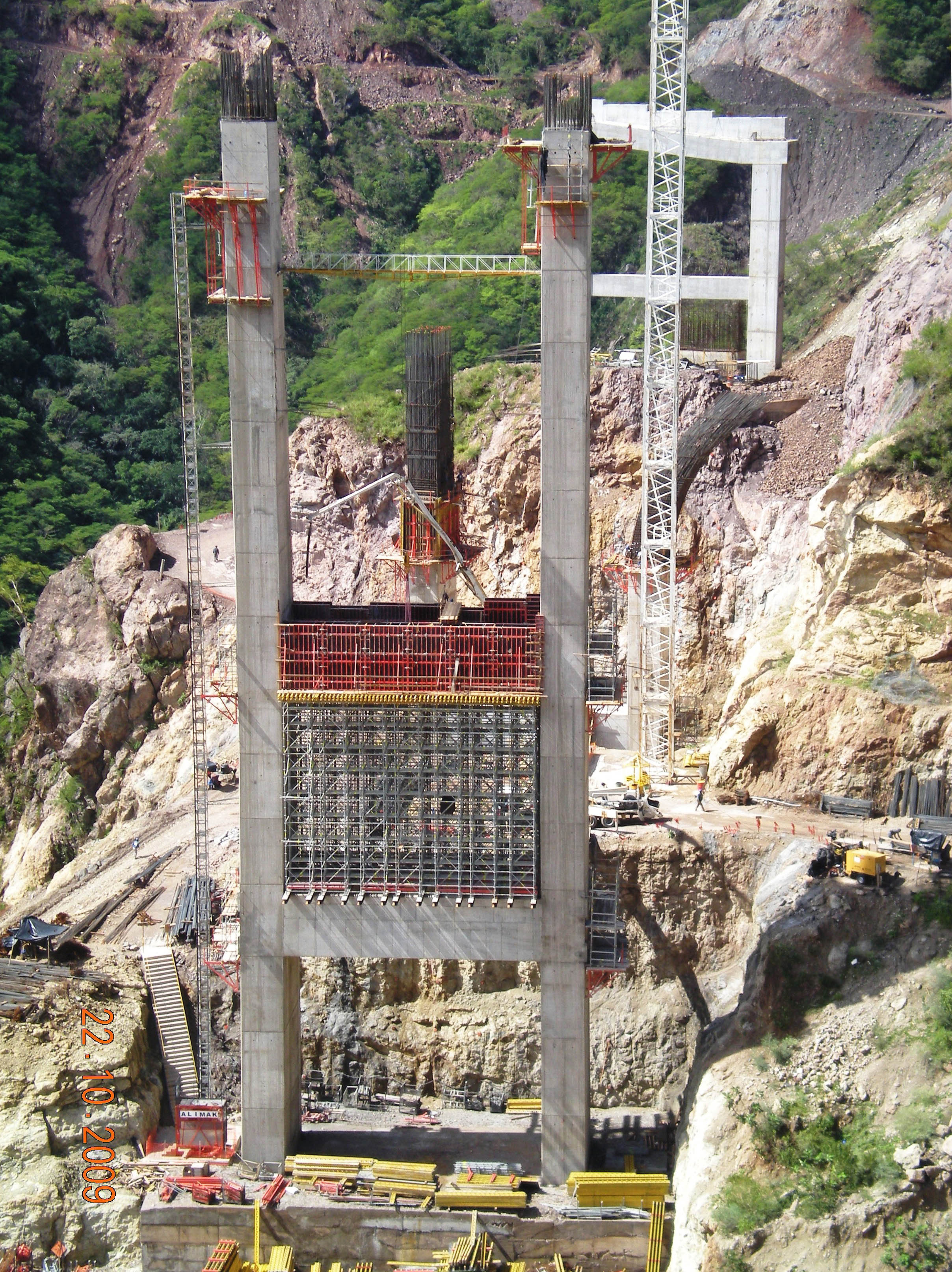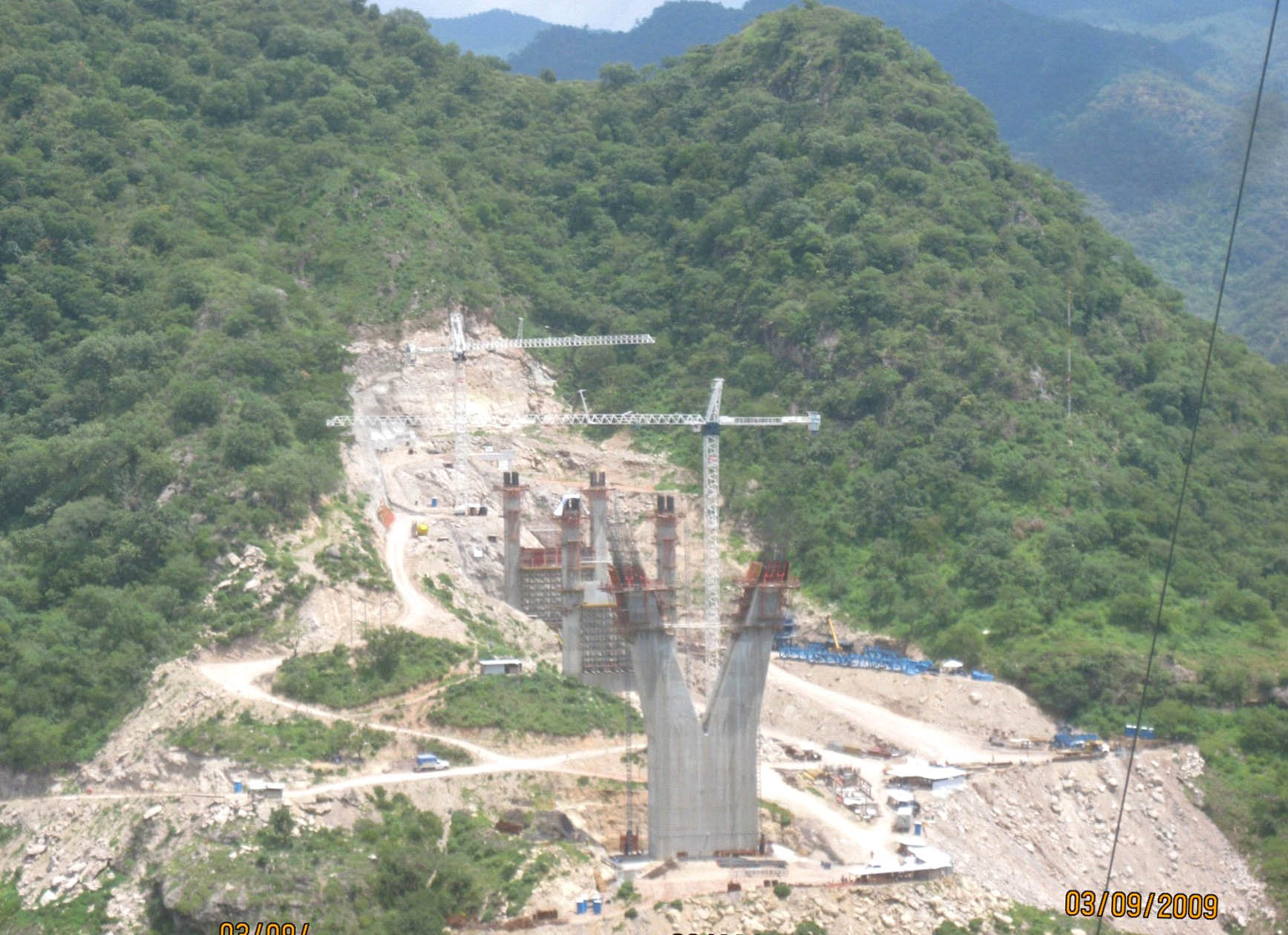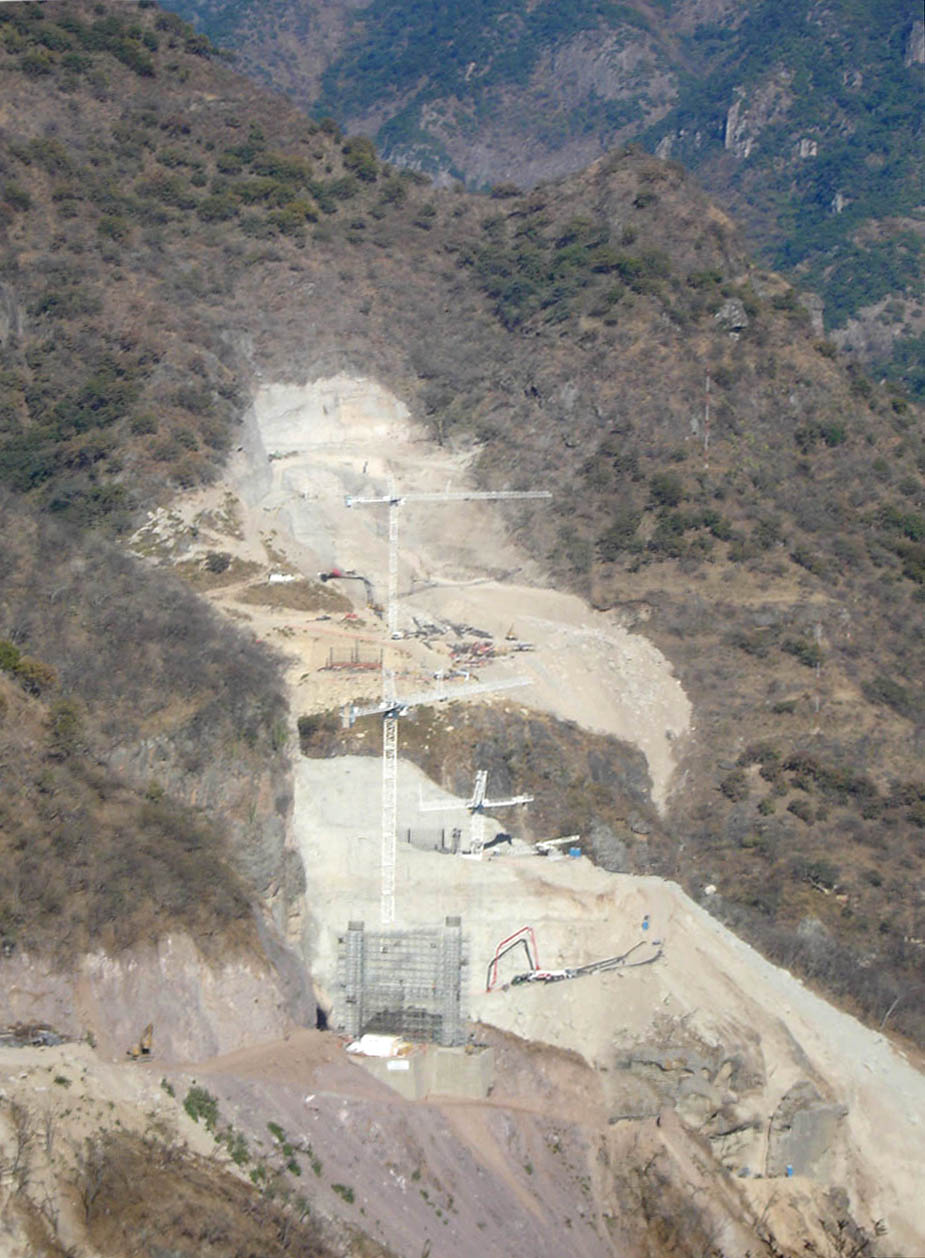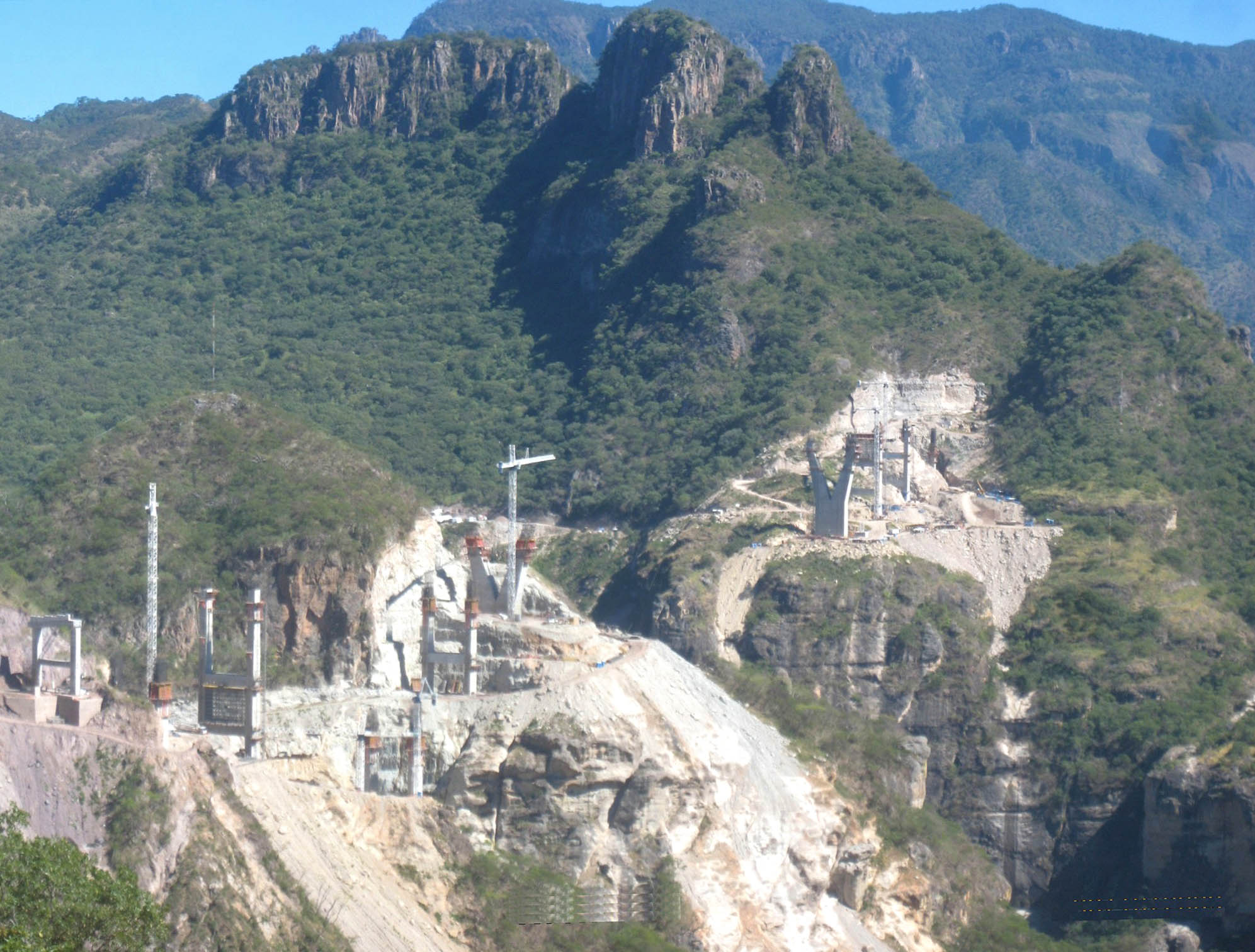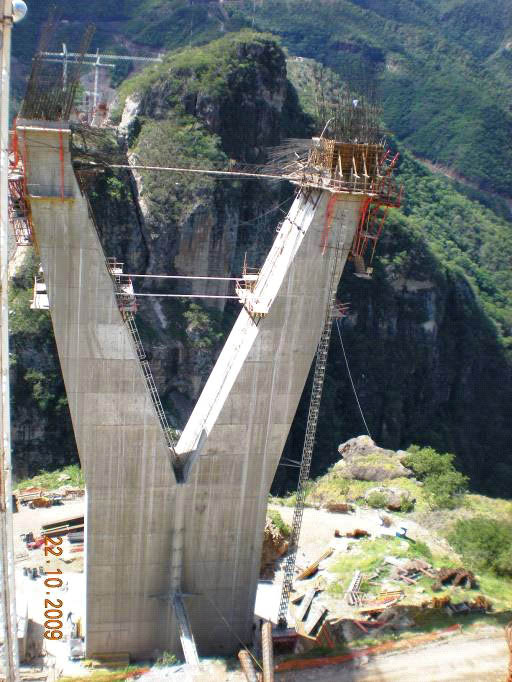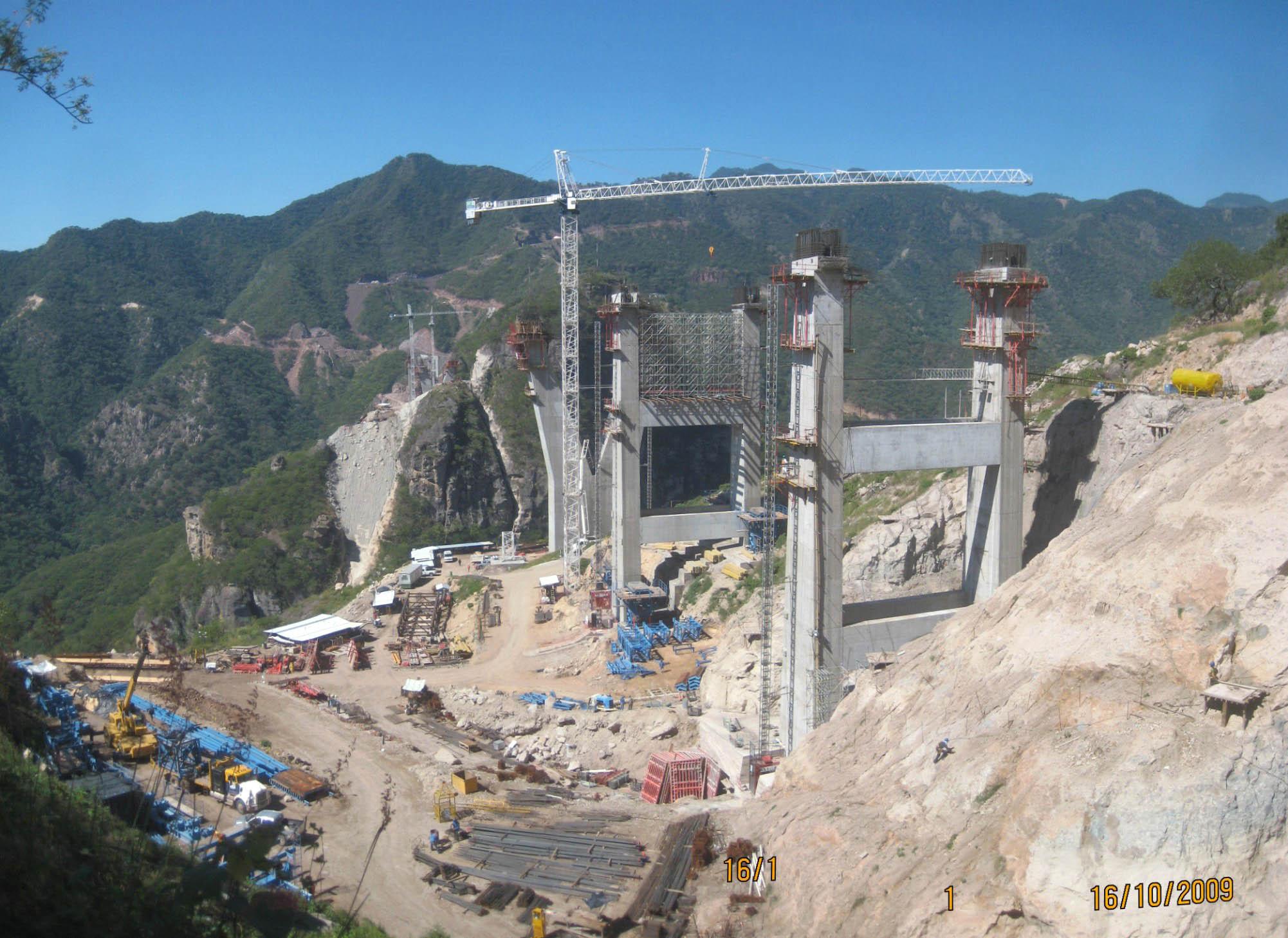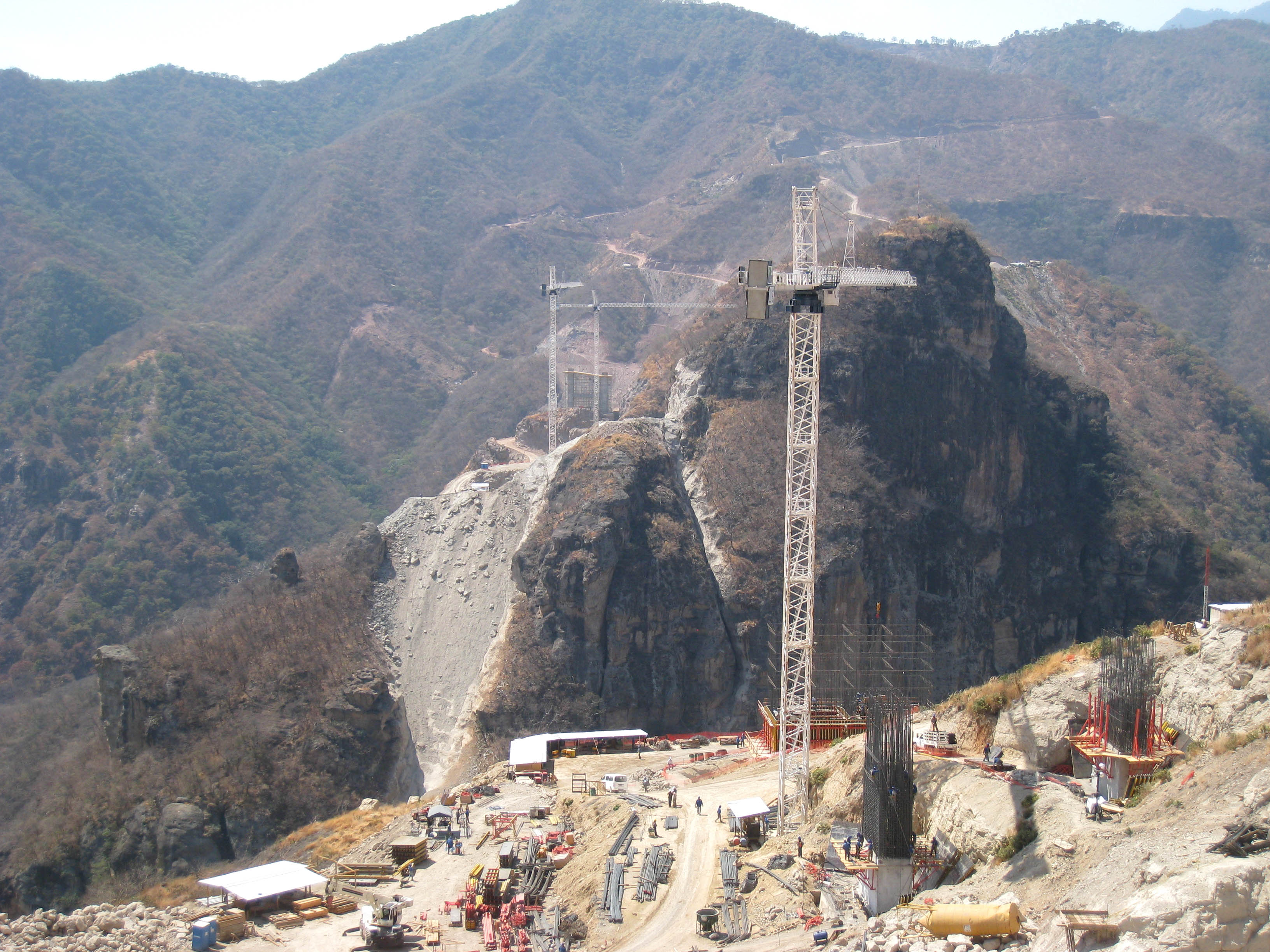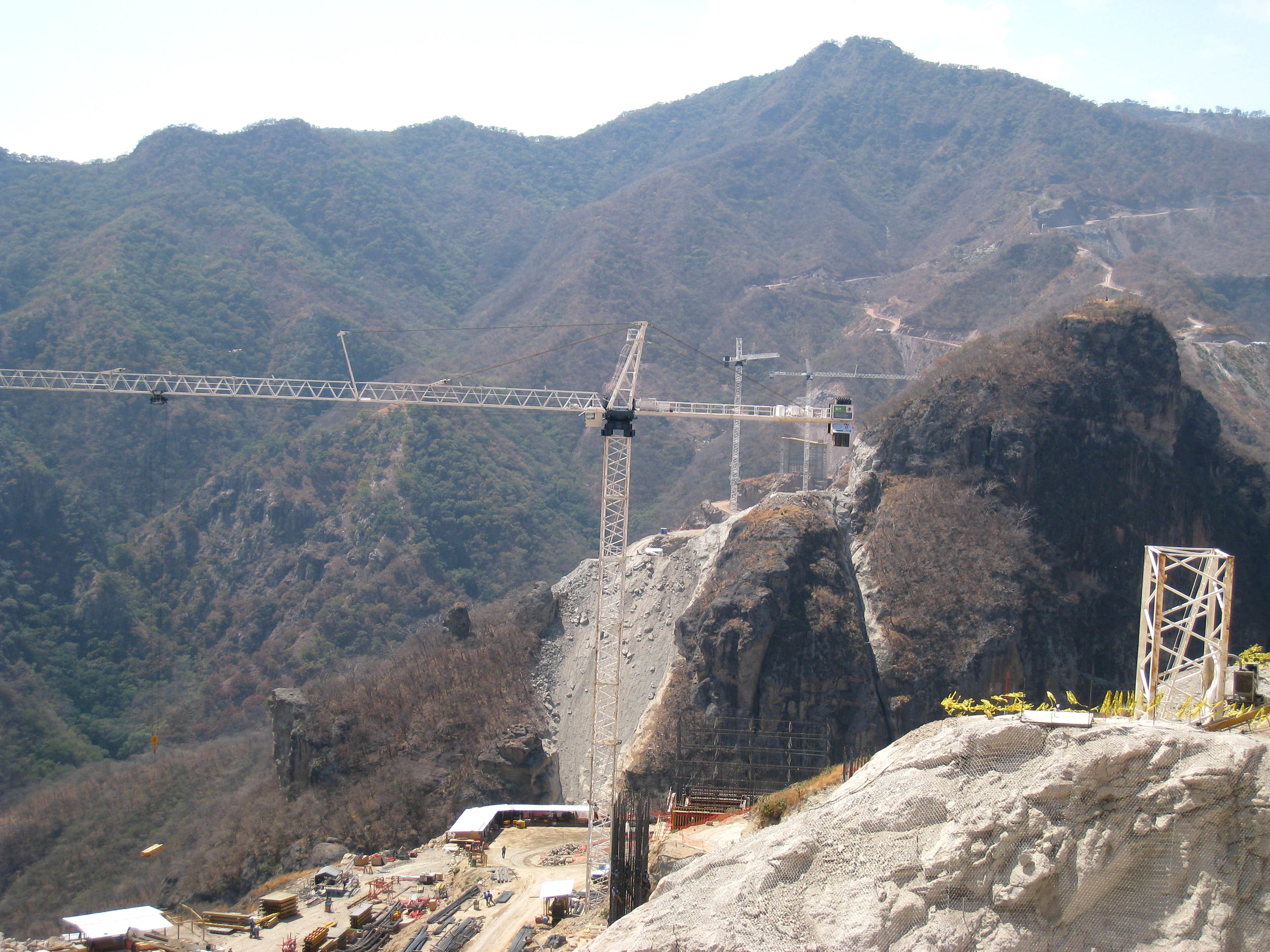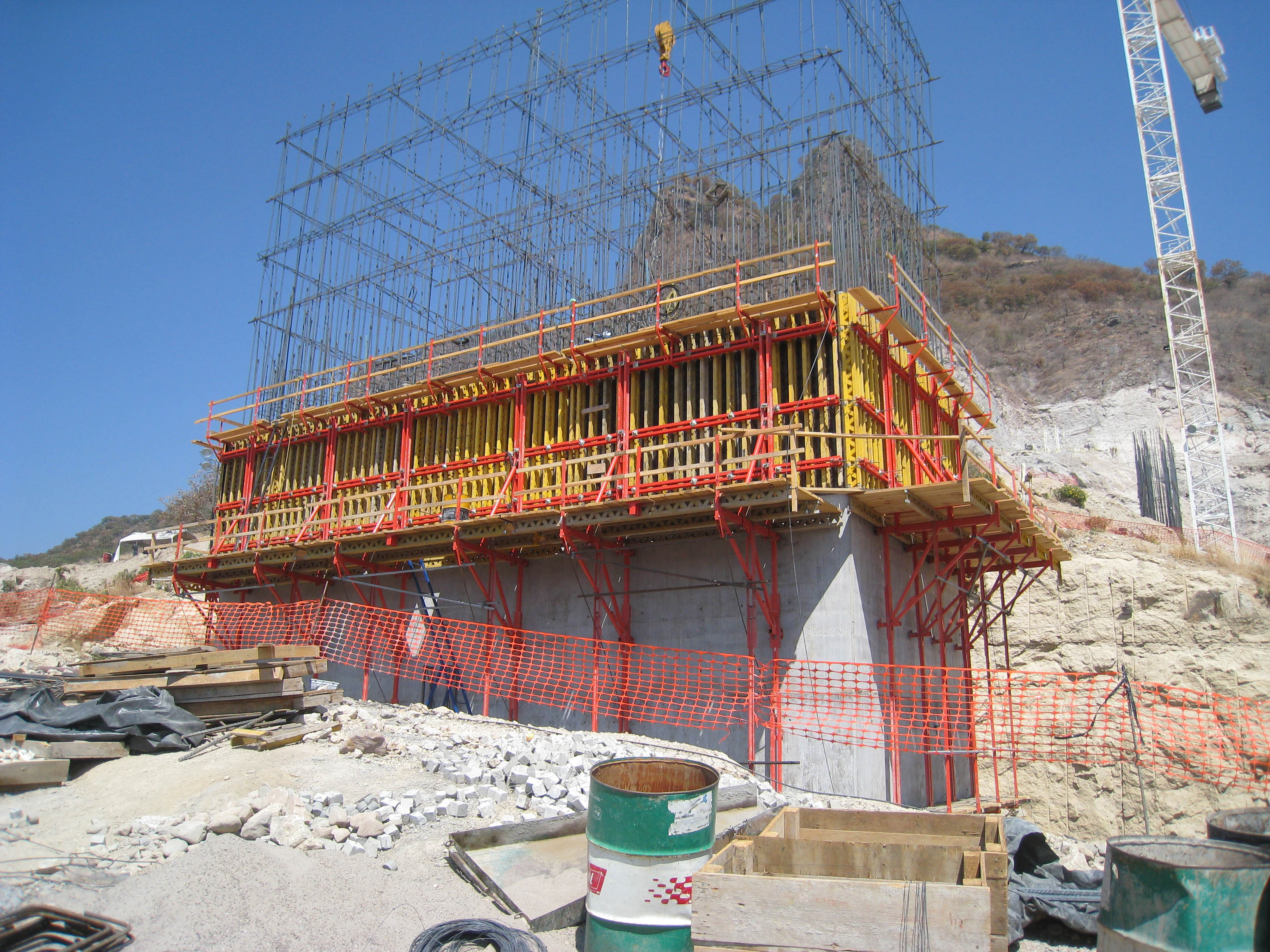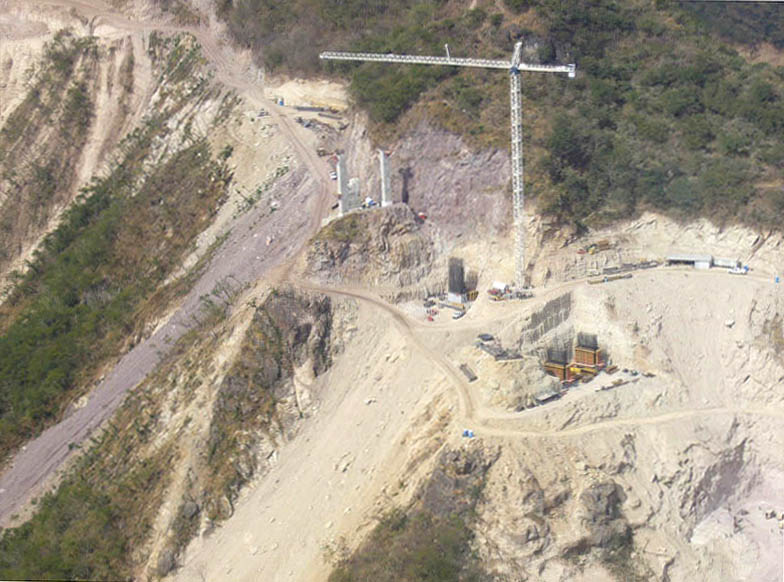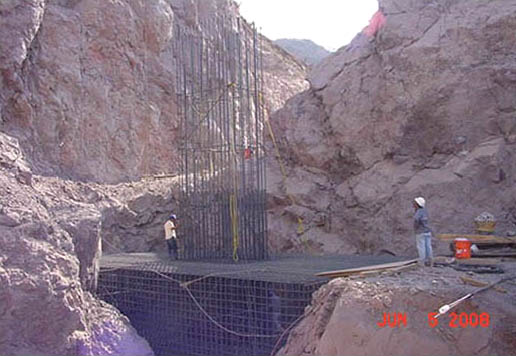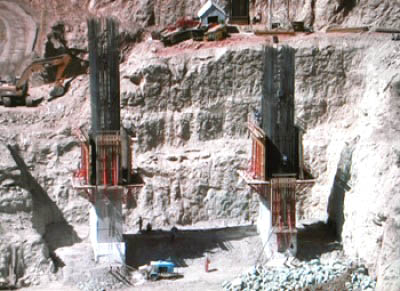Baluarte Bridge
Baluarte Bridge
Puente Baluarte
El Palmito, Sinaloa, Mexico
1,280 feet high / 390 meters high
1,706 foot span / 520 meter span
2012
When it opens in 2012, the Baluarte River Bridge will not only be the highest bridge in North America but the highest cable stayed bridge in the world. It is the crown jewel of the greatest bridge and tunnel highway project ever undertaken in North America. Known as the Durango-Mazatlán highway, it will be the only crossing for more than 500 miles (800 km) between the pacific coast and the interior of Mexico. The path of this new highway roughly parallels the famous “Devil’s Backbone”, a narrow road that earned its nickname from the way it follows the precarious ridge crest of the jagged peaks of the Sierra Madre Occidental mountains. The dangerous road is a seemingly endless onslaught of twisting, terrifying turns that are so tight there are times the road nearly spirals back into itself.
By cutting a safer, more direct route through the mountains, the highway department of Mexico hopes to improve trade and increase tourism between the city of Durango and the coastal city of Mazatlán. To achieve this connection, the Mexican engineers were forced to design an autopista with no less than 63 tunnels - nearly 10 times more than have ever been built on any road in North America. For big bridge fans, the highway is no less amazing with a parade of towering concrete beam bridges. Including Baluarte, there will be 8 bridges that exceed 300 feet (90 mtrs) in height including Santa Lucia, Neverías, La Pinta, Chico, Botijas, Pueblo Nuevo and El Carrizo. Only China’s West Hurong and Kunming-Guiyang and Italy’s A3 highways have a greater collection of high bridges.
Forming the border between Sinaloa and Durango states, the Baluarte River is the most formidable obstacle on the route with a gorge more than a quarter mile in height. To cross it, the Mexican engineers decided to go with a cable stayed bridge. It would allow the construction to proceed outward from a single tower on either side of the canyon, avoiding the difficult and expensive construction of temporary false work. Once completed, the final height of 1,280 feet (390 mtrs) will make it the second highest roadway bridge on earth. It will also have the longest span of any cable stayed bridge in North America at 1,706 feet (520 mtrs), exceeding the John James Audubon bridge in St. Francisville, Louisiana by 123 feet (37 mtrs).
When it is completed, the Baluarte crossing will be more than just a preeminent bridge but a signal to its bigger neighbor to the North that Mexico can design and build bridges with the same skill and perfection as the best of them. As a stretch of North American pavement without parallel, the Durango-Mazatlán highway will become a proud, prominent symbol of Mexico’s civil engineering skills for decades to come.
The rock wall face of the Durango side can be seen in this view from the Sinaloa side. Image by Grupo Triada
Another view looking east from the Sinaloa side showing the arrangement of piers or "pilas". Image by Grupo Triada
Pier 5 will be the tallest of all with a height of 554 feet (169 mtrs). Image by Grupo Triada
On the Durango side, Piers 3 and 4 rise in the foreground with the help of a dense lattice of scaffolding. Image by Grupo Triada
Image by Grupo Triada
Image by Grupo Triada
Image by Grupo Triada
Image by Grupo Triada
Image by Grupo Triada
Image by Grupo Triada
Image by Grupo Triada
On the western end of the Sinaloa side, workers hang high above pier 11. Image by Grupo Triada
Image by Grupo Triada
The V-shaped support of the shorter main tower on the Sinaloa side takes shape. Image by Grupo Triada
Temporary office and work buildings surround the base of the main tower on the Durango side. Image by Grupo Triada
Image by Grupo Triada
A view of pier 10 on the Sinaloa side. Image by Grupo Triada
The western approach spans cross a canyon more than 400 feet (122 mtrs) deep. If listed as a separate bridge, it would rank among Mexico's 10 highest bridges. Image by Grupo Triada
Looking down to the bottom of the 400 foot (122 mtr) deep canyon and piers 8 and 9. Image by Grupo Triada
Image by Grupo Triada
A clean rock face marks the spot where the Durango side tunnel will punch through the mountain. Image by Grupo Triada
Image by Tradeco
Image by Grupo Triada
Image by Grupo Triada
Image by Grupo Triada
Image by Grupo Triada
Image by Tradeco
Image by Tradeco
Construction view of piers 9,10,11 and 12.
